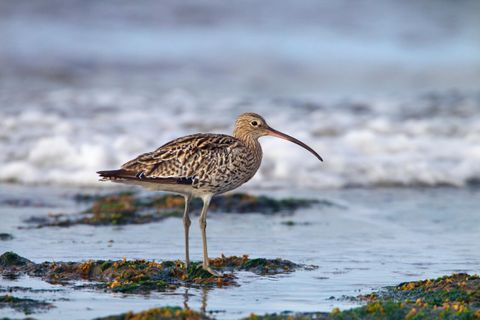Experience The Wonder Of Animals: Conservation And Preservation

Table of Contents
Understanding the Importance of Animal Conservation
Animal conservation is far more than just protecting individual species; it's about safeguarding the intricate web of life that sustains our planet.
Biodiversity and Ecosystem Health
Biodiversity, the variety of life on Earth, is essential for healthy ecosystems. Animals play crucial roles in maintaining this balance. The loss of even a single species can trigger a cascade of negative effects, impacting the entire ecosystem. Biodiversity loss is accelerating at an alarming rate, primarily due to habitat destruction and climate change.
- Pollination: Many animals, including bees, butterflies, and birds, are vital pollinators, ensuring the reproduction of countless plant species, including many of our food crops. Their decline directly threatens food security.
- Seed Dispersal: Animals play a crucial role in dispersing seeds, facilitating plant reproduction and forest regeneration. Loss of seed dispersers can lead to reduced forest diversity and resilience.
- Nutrient Cycling: Animals contribute to nutrient cycling through their waste products and decomposition, enriching soils and supporting plant growth. Disruptions in this process can negatively impact ecosystem productivity.
- Statistics show that animal populations are declining at an unprecedented rate. The WWF's Living Planet Report consistently highlights the alarming trends in biodiversity loss, emphasizing the urgent need for effective conservation strategies.
The Economic Value of Animals
Beyond their intrinsic value, animals contribute significantly to the global economy.
- Ecotourism: Wildlife tourism generates billions of dollars annually, supporting local communities and economies in many parts of the world. Protecting animals is crucial for maintaining this vital income stream.
- Wildlife Trade: While legal wildlife trade can contribute to economies, the illegal wildlife trade represents a massive threat to countless species, generating billions in illegal profits and fueling biodiversity loss. Stricter regulations and enforcement are crucial.
- Sustainable Livelihoods: Many communities rely on animals for their livelihoods through fishing, agriculture, and other practices. Sustainable practices are vital to ensure long-term economic stability and prevent overexploitation.
Threats to Animal Populations and Habitats
Numerous factors threaten animal populations and habitats, requiring concerted global efforts to mitigate their impact.
Habitat Loss and Fragmentation
Habitat destruction is arguably the greatest threat to wildlife. Deforestation, urban sprawl, and intensive agriculture are destroying and fragmenting habitats at an alarming rate, leaving animals with insufficient space to survive and reproduce.
- Examples: The orangutan, whose habitat is being destroyed by palm oil plantations, and the Sumatran rhino, facing extinction due to habitat loss and poaching.
- Habitat restoration projects are underway in many parts of the world, focusing on reforestation, wetland restoration, and creating wildlife corridors to reconnect fragmented habitats.
Climate Change and its Effects
Climate change is exacerbating existing threats, leading to shifts in animal ranges, altered migration patterns, and increased vulnerability to disease. Global warming is causing sea-level rise, impacting coastal ecosystems and species.
- Examples: Polar bears are losing their sea ice habitat, while coral reefs are bleaching due to rising ocean temperatures.
- Mitigation and adaptation strategies are crucial, including reducing greenhouse gas emissions and implementing conservation measures to help species adapt to changing conditions.
Pollution and its Impact
Various forms of pollution, including plastic pollution, water pollution, and toxic waste, are poisoning animals and disrupting ecosystems.
- Examples: Seabirds ingesting plastic debris, marine animals entangled in fishing gear, and amphibians affected by pesticides.
- Cleanup initiatives, stricter regulations on industrial waste, and promoting sustainable practices are essential to reduce pollution and protect wildlife.
Effective Strategies for Animal Conservation and Preservation
Effective animal conservation requires a multifaceted approach involving various stakeholders and strategies.
Protected Areas and Wildlife Reserves
Establishing and effectively managing protected areas such as national parks and wildlife reserves is crucial for safeguarding biodiversity. These areas offer refuge for threatened species and protect vital habitats.
- Examples: The Serengeti National Park in Tanzania and the Galapagos National Park in Ecuador represent successful examples of protected area management.
- Challenges include securing adequate funding, combating illegal activities within protected areas, and ensuring effective community engagement.
Anti-Poaching and Illegal Wildlife Trade Efforts
Combating poaching and illegal wildlife trade requires strengthened law enforcement, international cooperation, and community involvement.
- Examples: Community-based anti-poaching initiatives in Africa and initiatives targeting the illegal trade in ivory and rhino horn.
- International collaboration is crucial to effectively combat wildlife crime, which often involves cross-border trafficking.
Community-Based Conservation
Involving local communities in conservation efforts is essential for long-term success. Community conservation fosters a sense of ownership and responsibility, promoting sustainable practices and reducing human-wildlife conflict.
- Examples: Projects that empower local communities to manage natural resources sustainably and benefit from wildlife tourism.
- Benefits include improved livelihoods, reduced pressure on wildlife, and enhanced conservation outcomes.
Raising Awareness and Education
Environmental education and public awareness campaigns are crucial for promoting responsible behavior and fostering support for animal conservation.
- Examples: Educational programs in schools, public awareness campaigns highlighting the importance of biodiversity, and promoting responsible tourism.
- Promoting sustainable practices and responsible consumption patterns is vital to reducing human impact on the environment and protecting wildlife.
Conclusion
The threats to animal populations are numerous and interconnected, but effective animal conservation is achievable through a combination of strategies. Protecting biodiversity is not just about saving individual species; it's about maintaining the health of our planet and ensuring a sustainable future for all. We must act now to address the threats to wildlife and their habitats. Join the fight for animal conservation by supporting organizations dedicated to protecting wildlife, adopting sustainable practices, and advocating for stronger environmental policies. Learn more about animal conservation and how you can help preserve our planet’s incredible biodiversity for generations to come. Support organizations working to preserve our wildlife, and make a difference in the fight for wildlife conservation today.

Featured Posts
-
 Winterwatch 2024 Dates Locations And What To Expect
May 13, 2025
Winterwatch 2024 Dates Locations And What To Expect
May 13, 2025 -
 Unforgettable Moments Celebrating The Best Efl Games
May 13, 2025
Unforgettable Moments Celebrating The Best Efl Games
May 13, 2025 -
 Kakanwil Papua Persipura Butuh Dukungan Masyarakat
May 13, 2025
Kakanwil Papua Persipura Butuh Dukungan Masyarakat
May 13, 2025 -
 The Bce Inc Dividend Reduction What It Means For Your Investments
May 13, 2025
The Bce Inc Dividend Reduction What It Means For Your Investments
May 13, 2025 -
 Dodgers Defeat Cubs 3 0 Yamamotos 6 Inning Masterclass And Edmans 3 Run Homer
May 13, 2025
Dodgers Defeat Cubs 3 0 Yamamotos 6 Inning Masterclass And Edmans 3 Run Homer
May 13, 2025
